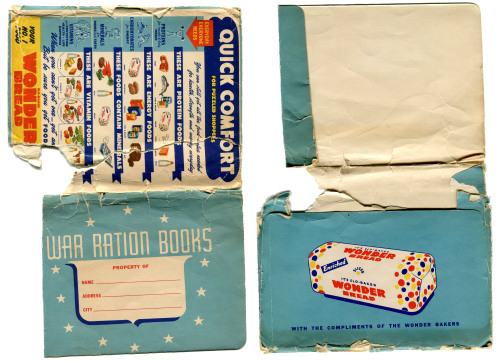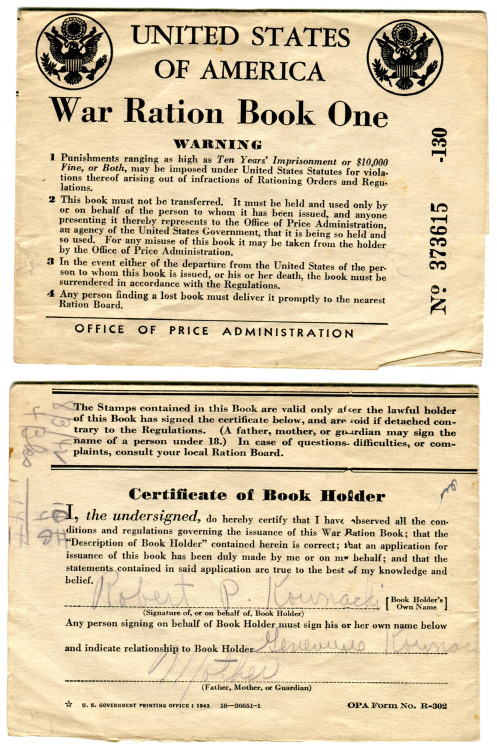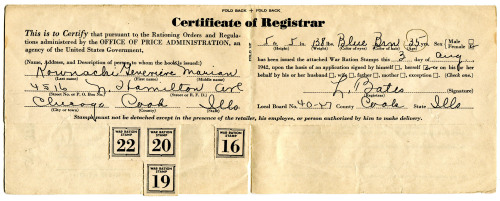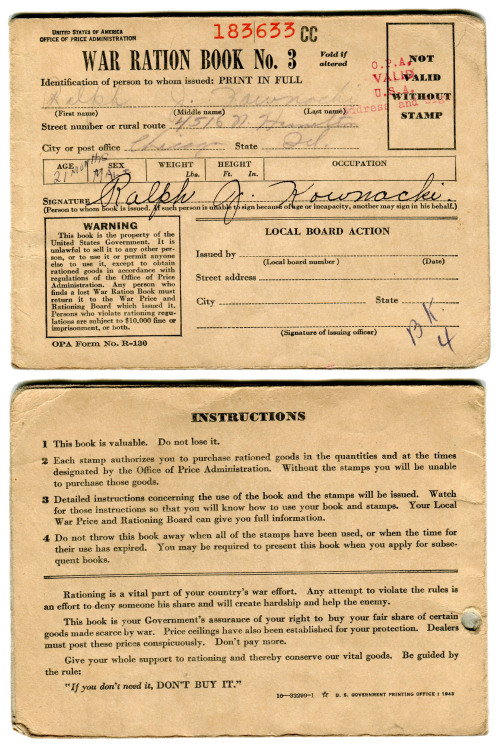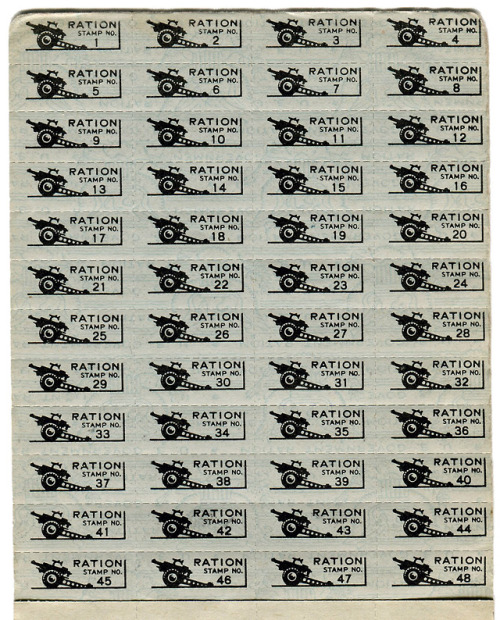Wrapping up my WWII rations collection are coupons for the grocery store. While the initial thought
Wrapping up my WWII rations collection are coupons for the grocery store. While the initial thought would be that this was to make sure food was available for the troops (which in some cases was the fact), the real reasoning went beyond the actual food stuffs. It actually had to do with the processing and delivery. Like I had mentioned in my earlier rations posts, a big driving factor was the use of rubber. Hence limiting the amount of stuff you could buy meant that less stuff would have to be transported = less wear on precious tires. There was also the thought that less tin would be consumed by cans if people couldn’t buy as much. While true, I have read that the tin shortage wasn’t really as bad as the public thought. Either way, the rations did help cutback on cans. This is by no means all of the paperwork involved with rations. As a matter of fact there was a War Ration Book No. 4 issued later on that I don’t have, and plans for a Book 5 as well. I like how over time the rations became more stylized, as you can see comparing Book 1 stamps with Book 3. (And Book 4 was even more so.) Besides the graphics the other thing I really like is the slogan that was used throughout the war years. “If you don’t need it, DON’T BUY IT.” Words that I still live by today. -- source link
#history#vintage#antique#wwii ephemera#history lesson#historical documents#rationing#food rations#grocery rations#frank kownacki#home front#chicago#history blog#kownacki#historical writing#writing history#wonder bread#family ephemera
